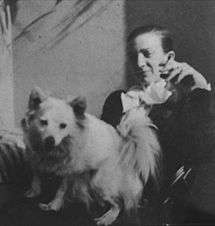Maria von Linden
Maria Linden (18 July 1869 – 25 August 1936) was a German bacteriologist and zoologist. Linden had to struggle to gain a university place, a degree and a doctorate because of her gender. In name only, she became one of Germany's first professors. She patented a type of bandage and won a prize for her investigations of butterfly wings. She was driven from office as a result of the rise of the Nazi Party in Germany.
Maria Linden | |
|---|---|
Linden in 1894 | |
| Born | 18 July 1869 Schloss Burgberg, near Heidenheim, Württemberg |
| Died | 25 August 1936 (aged 67) |
| Nationality | German |
| Occupation | Bacteriologist and zoologist |
Early life
Linden was born to a German aristocratic family who resided at Schloss Burgberg near Heidenheim, Kingdom of Württemberg, in 1869. Her parents Edward and Eugenie von Linden arranged for her to attend a school in Karlsruhe for four years where she received a lady's education. She showed ability and enthusiasm for maths and physics. On her return to the family's castle she had her first paper on the mineral deposits in the River Hürbe read at Karlsruhe's geological society (by a man)[1] in 1890. The paper was noticed by geologist Professor von Quenstedt from University of Tübingen.[2]
Career

The following year after private tutoring she was the first woman in the Kingdom of Württemberg to take the Reifeprüfung examination. This was possible because she had clearance from a minister and this examination showed that she had the academic ability, if not the gender, to attend a German university.[3] Linden had to be content with private lessons from university professors at Tübingen—she failed to gain an official place, despite pressure from her uncle, Joseph von Linden who had been a minister. In lieu, by a vote of 8 to 10, she was allowed to be a guest student. Her studies at the university were financed and supported by the German Association of Female Citizens.[2]
She continued her interest in maths, physics and writing papers on natural history as she learnt about Lamarkian evolution from the zoologist Theodor Eimer. Under Eimer's guidance she was awarded a degree and in 1895 she completed her thesis on the evolution of a snail's shell and she was awarded a doctorate in Natural Science. She worked as an assistant to Eimer until his death in 1899.[3]
In 1903 she was awarded the Da Gama Machado prize for her work on the development of colour in butterfly wings[4] and by 1908 she was in Bonn where she led a new Institute of Parasitology. She researched the causes and symptoms of tuberculosis and other lung diseases. She believed that copper may provide a therapy for tuberculosis. Whilst she was in Bonn she took Frau von Altenburg as her companion. Linden became the first woman[1] (or one of the first[3]) to be made a titular Professor in Germany in 1910. Despite the disapproval of the Prussian Ministry of Education, this gave her the rank of Professor but she was not allowed to teach. Linden received a patent for her discovery that copper salts could be used as a disinfectant; a bandaging company later included this idea in their products.[1]
Linden sold the family castle as she needed the money and the rise of the Nazis meant that she had to leave her job. She emigrated with Frau von Altenburg to Liechtenstein.[1]
Death and legacy
Linden died of pneumonia on 25 August 1936 in Schaan, Liechtenstein.[3] She patented a type of bandage and won a prize for her investigations of butterfly wings[4] and was awarded a patent for her discovery that copper salts could be used as a disinfectant.[1]
In 1999, a secondary school in Calw was named after her. It's the Maria-von-Linden-Gymnasium, which is a German type grammar school focusing on sciences.
Also known as
Linden may also be known as: Maria von Linden; Maria Gräfin von Linden; Maria Gräfin von Linden-Aspermont; Maria von Linden-Aspermont; or Linden-Aspermont.
References
- Marilyn Ogilvie; Joy Harvey (16 December 2003). The Biographical Dictionary of Women in Science: Pioneering Lives From Ancient Times to the Mid-20th Century. Routledge. pp. 89–90. ISBN 978-1-135-96343-9.
- Maria von Linden, Rheinische-Geschichte.lvr.de, Retrieved 9 November 2015
- Mary R. S. Creese; Thomas M. Creese (2004). Ladies in the laboratory II: West European women in science, 1800–1900: a survey of their contributions to research. Lanham, Maryland: Scarecrow Press. pp. 119–122. ISBN 978-0-8108-4979-2.
- "Societies and Academies". Nature. 69 (1783): 215–216. 31 December 1903. doi:10.1038/069215b0. Retrieved 9 November 2015.